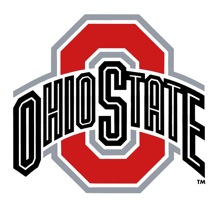Below is a summary of the abstract you submitted. Presenting author(s) is shown in bold.
If any changes need to be made, you can modify the abstract or change the authors.
You can also download a .docx version of this abstract.
If there are any problems, please email Dan at dar78@pitt.edu and he'll take care of them!
This abstract was last modified on May 9, 2016 at 5:44 p.m..

Bacteriophages are the most abundant genetic entity on earth, and as the number of sequenced phage genomes grows, especially among mycobacteriophages, our knowledge of their vast diversity only seems to increase. At The Ohio State University, we have sequenced 19 phages, belonging to 7 different clusters. Although we have isolated members from several clusters, the F cluster of phages is of particular interest to us since the discovery of Squirty, the first F3 phage, in 2012. As of 2016, 106 F cluster phages have been isolated, with the majority (99) belonging to the F1 subcluster, 5 classified as F2 and one phage each in the subclusters F3 and F4. The average genome is 57,384 bp with an average GC content of 61.5% and 104 predicted open reading frames. At Ohio State, two F1s have been sequenced (BuzzLyseyear and WillSterrell) in addition to Squirty, the only F3. We decided to further explore some of the features found in F cluster phage as we continue to examine the relationships within this expanding subgroup of mycobacteriophages.
Some genes that are common to many F cluster bacteriophages may encode glycosyltransferases. Many mycobacteriophage genomes contain at least one open reading frame that contains domains common to glycosyltransferases. Bacteriophages are known to have genes which code for 2 different types of glycosyltransferases. One type allows phages to protect their own DNA from host endonucleases through glycosylation. The other type allows temperate phages to alter the serotype of their host, which can prevent infection by related phages. Many F cluster phages have two distinct genes whose products may function as glycosyltransferases, based on their predicted amino acid sequences.
In addition to the structure and function of putative glycosyltransferase genes, other features that we are examining and comparing across F cluster phage genomes include integrase structure, antirepressor structure, and their relationship; the presence and absence of HNH endonuclease genes; toxin-antitoxin systems; and potential promoters. Continued comparative analysis is being used to identify other conserved or unique features of F cluster mycobacteriophage.
